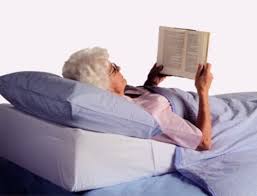
Bed Rest
Bed Rest serves as a time honored treatment for both injury and illness, and is prescribed more often around flu season. A normal muscle, at complete rest, in absence of illness, loses up to 15% of its strength each week.1
During bed rest, the first muscles to become atrophied are the trunk and lower extremity muscles involved in gait and upright posture.2 Illness itself can also cause atrophy of the skeletal muscles, over and above the strength losses caused by rest. Your elderly patients prove particularly vulnerable to the negative sequel of rest.
Among a test sample of healthy subjects age 67 and older, 10 days of bed rest resulted in more lean tissue loss than 28 days of bed rest caused in younger test subjects.3 For patients over the age of 70, bed rest is associated with a major, new disability in one-third of prolonged cases.4 Among elderly patients, when the negative effects of bed rest are not addressed assertively, injury or prolonged difficulties become more likely.
Research has found that during periods of bed rest at home elderly patients tend to spend more time than needed resting in bed or sitting.4
This stems largely from a lack of confidence and fear of self-injury inspired by the sudden loss of strength and fitness. After the injury has healed, many elderly patients still experience considerable risks associated with their period of rest. Rate of recovery from disuse weakness is slower than the rate of loss. With intensive exercise, patients take assistinghands.com/2″>www.assistinghands-naperville.com
References
1. Dittmer D, Teasell R. Complications of immobilization and bed rest – Part 1: musculoskeletal and cardiovascular complications. Can Fam Physician. 1993; 39: 1428-1437.
2. Halar E, Bell K. Rehabilitation’s relationship to inactivity. In: Kottke F, Lehmann J, editors. Krusen’s handbook of physical medicine and rehabilitation. 4th ed. Philadelphia: WB Saunders Co, 1990: 1113-39.
3. Kortebein P, Ferrando A, Lombeida J, et al. Effect of 10 days of bed rest on skeletal muscle in healthy older adults. JAMA. 2007; 297 (16): 1772-1774.
4. Brown C, Redden D, Flood K, et al. The underrecognized epidemic of low mobility during hospitalization of older adults. Journal of the American Geriatrics Society. 2009; 57 (9): 1660-65.
5. Muller E. Influence of training and inactivity on muscle strength. Arch Phys Med Rehabil. 1970; 51: 449-62.
